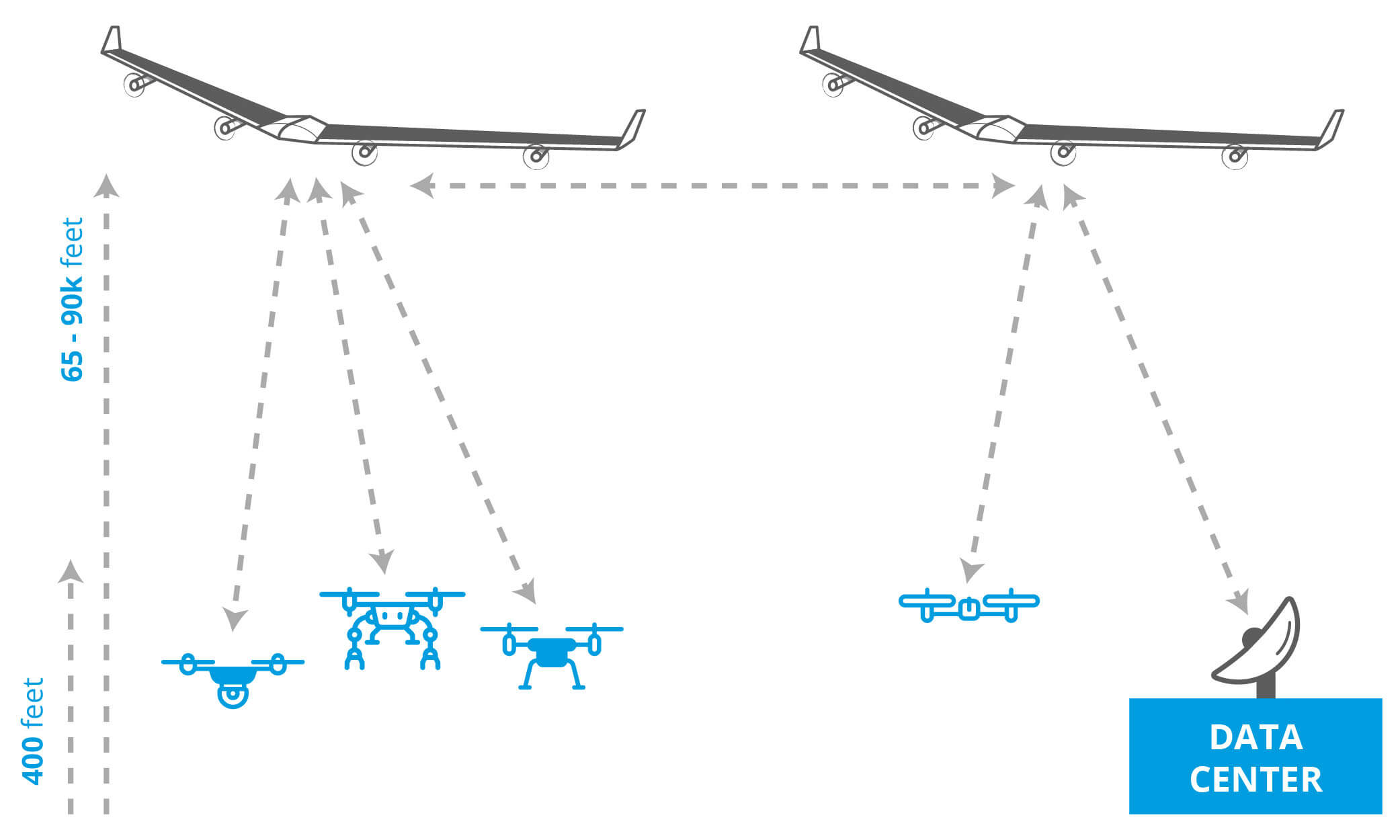Solutions
Terrestrial Broadband Network for Commercial Drones

A terrestrial network of a number of multi-sectors cell sites is designed to provide connectivity to low and mid altitude drones. The 5 GHz unlicensed band is used for the communications between the drones and the base station at the cell sites, as well as between the drones in a mesh network configuration. The objective is to design a cost effective, high data rate, and ubiquitous network that provides coverage not only in the space the drones fly within a city but also outside the cities where cellular coverage may not be adequate. Therefore, the system must be designed to require a small number of cell sites to be cost effective while having a link budget to do data rates of as high as 200 Mbps on the uplink from drones to the cell sites for uploading real time video. The network in a typical metropolitan area has a total throughput of at least 10 Gbps to provide connectivity to a large number of drones, in a wide area, and at high data rates.
Ubiqomm has designed base stations for deployment at the cell sites, and communications devices for installation on the drone, that mitigate interference from other devices operating in the unlicensed band, and maintain robust link budget to achieve high data rates and high network throughput to the drone operating at distances as large as 25 km from the base station. Ubiqomm technology provides a highly cost effective connectivity solution for drones by deploying a low cost network and using the unlicensed band. Given the large base station to drone range of the Ubiqomm technology, the network may be deployed to provide connectivity to drones in a wide area very cost effectively.
Connectivity to Low/Mid Altitude Drones Using HALE Drones

High Altitude Long Endurance (HALE) drones provide communications links among low/mid altitude drones in a mesh architecture, as well as from the drones to the internet. Each low altitude drone will be equipped with a small communications device consisting of a modem and a small antenna with high enough gain toward the HALE drones to achieve data rates of greater than 200 Mbps or higher between the low and high altitude drones. HALE drones relay the data from/to a low altitude drone to/from another low altitude drone, or to/from the gateway terminal connected to the internet based on the data packets’ destination. As shown in the figure, in remote areas the data from/to a low/mid altitude drone may be relayed to one or more HALE drones before reaching the gateway connected to the internet, thereby providing truly ubiquitous connectivity in areas with poor or no connectivity and over the ocean. The drone network in the figure provides cost effective, high speed and ubiquitous connectivity to a wide range of applications such as natural disaster, wide area fire scenarios, medical, agriculture, and mining and oil and gas fields, where low altitude drones collect data such as sensor data, pictures, and video that need to be uploaded to appropriate data center.
Broadband to Home and Enterprise

The figure to the right shows a network of HALE drones providing broadband connectivity to homes, enterprises, and backhaul to cellular cell sites, small cells, and 5G access points. Peak data rate to each terminal installed at a home or enterprise may be as high as 2 Gbps. The terminal is installed outside the building with line of sight to the drone. The antenna aperture size of the terminal may be as small as 20 cm in diameter to allow low cost terminals. The aperture size may be chosen to be larger to achieve higher peak data rate to the terminal. Since the drone is traveling in a cruising orbit, and the terminal antenna at mmWave frequencies has a narrow beamwidth of a few degrees, the terminal antenna needs to track the position of the drone. One cost effective approach to terminal antenna beam tracking mechanism uses a two axis mechanical steering device.